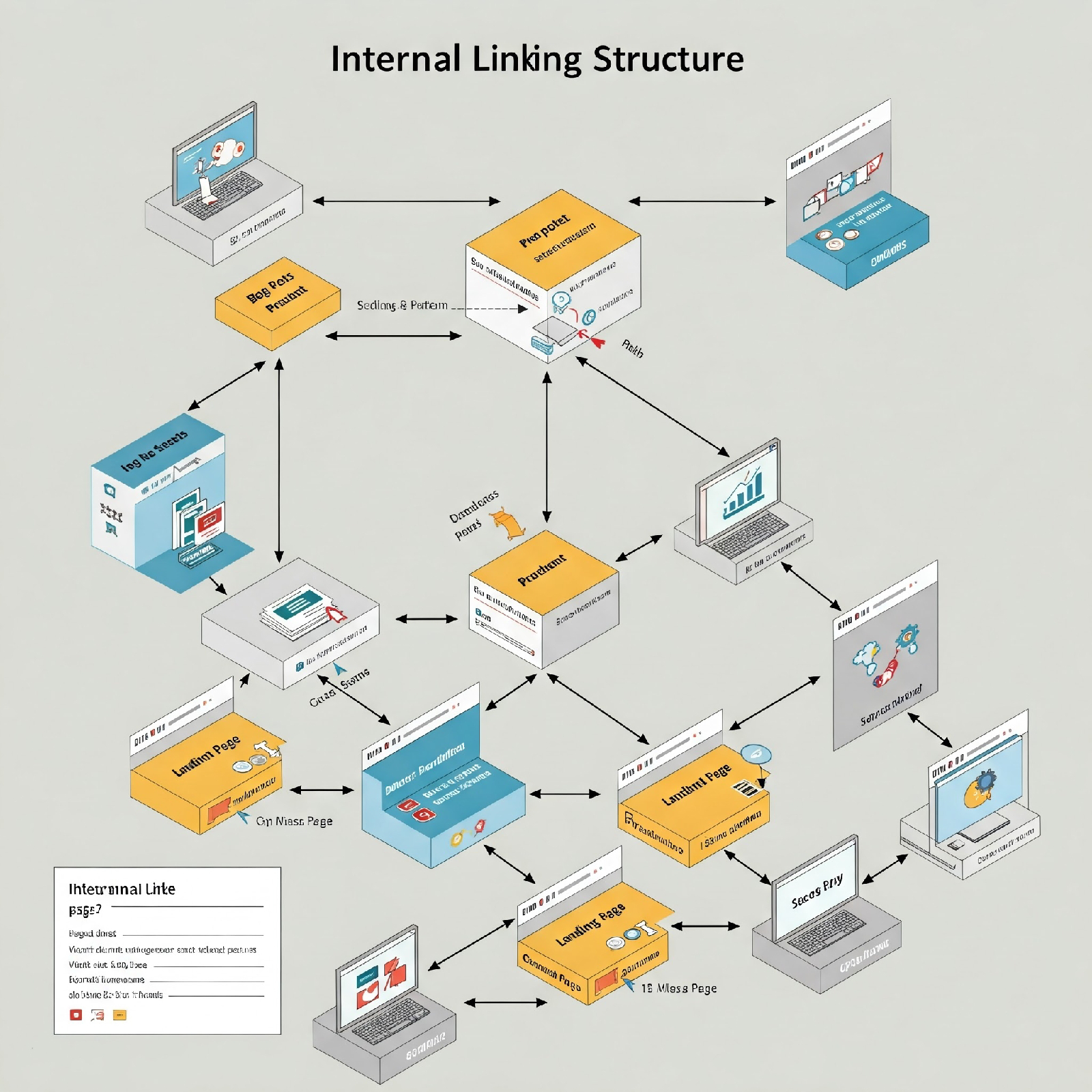Boost Your Google Ranking: Unleash the Power of Internal Linking
Boost Your Google Ranking: Unleash the Power of Internal Linking
Did you know that almost 70% of website traffic starts with a search engine? Yet, many businesses miss a simple trick that could send their Google ranking soaring. That trick? Internal linking. Internal linking is a simple, powerful tool that helps search engines understand your site and helps users find what they need, boosting your SEO and your spot on Google.
Understanding Internal Linking: The Foundation of SEO Success
Internal linking is the unsung hero of SEO. It's time to shine a light on what it is and why it matters.
What is Internal Linking?
Internal linking simply means linking one page of your website to another page on your website. It's like creating a roadmap for your site, guiding visitors and search engines to your most important content. Instead of sending people away from your site, you're keeping them engaged. This could be linking a blog post to a product page, or connecting related services together.
Why is Internal Linking Important for SEO?
Internal linking plays a big part in SEO because it affects how search engines crawl, index, and rank your website. When you link pages together, you're helping Googlebot find and understand all of your content. This can boost your site's visibility and, over time, improve its placement on search results pages. It is a key ranking factor.
The Difference Between Internal and External Linking
Internal links point to other pages on your website. External links point to pages on other websites. External links are important for showing credibility and connecting with other sources. Internal links, however, are all about building authority and user experience within your own site. They serve different, but equally vital, purposes.
The SEO Benefits of a Strong Internal Linking Strategy
A smart internal linking strategy can transform your website's SEO performance. Here's how.
Improved Website Crawlability and Indexing
Think of search engine bots like spiders crawling your website. Internal links act as the web, guiding them from one page to the next. The easier it is for these bots to navigate, the more efficiently they can index your content, ensuring that all your important pages get seen and ranked.
Enhanced User Experience and Engagement
When visitors can easily find what they're looking for, they're more likely to stick around. Internal links create a seamless experience, guiding users to related content and keeping them engaged. This reduces bounce rate (when someone leaves your site quickly) and increases time on site, both of which are positive signals for search engines.
Increased Page Authority and Ranking Signals
Every link acts as a vote of confidence. Internal links distribute "link juice"—the authority passed from one page to another—across your website. By strategically linking to high-priority pages, you can boost their authority and send stronger ranking signals to Google. Think of it as an endorsement from one page to another within your own website.
Best Practices for Implementing an Effective Internal Linking Strategy
Ready to put internal linking to work? Here are some steps to make your strategy a success.
Use Relevant and Contextual Anchor Text
Anchor text is the clickable text of a link. Make sure your anchor text is descriptive and relevant to the page you're linking to. Instead of generic phrases like "click here," use keywords that give search engines (and users) a clear idea of what to expect.
Link to High-Priority Pages
Focus your internal linking efforts on the pages that matter most—the ones you want to rank higher in search results. These might be your product pages, key service pages, or cornerstone content pieces. Strategically link to these pages from other relevant areas of your website to boost their visibility.
Maintain a Natural and Balanced Linking Profile
Don't go overboard with internal linking. Too many links can look spammy and hurt your credibility. Aim for a natural and balanced linking profile, where links flow organically within your content. Focus on providing value to the user first, and let the links follow.
Tools and Techniques for Optimizing Your Internal Linking
Want to take your internal linking to the next level? These tools and techniques can help.
Using Google Search Console to Identify Opportunities
Google Search Console is a free tool that provides valuable insights into your website's performance. Use it to find orphaned pages (pages with no internal links) and keyword opportunities. By identifying these gaps, you can create a more robust and effective internal linking structure.
Leveraging SEO Tools for Internal Link Audits
SEO tools like Semrush and Ahrefs offer in-depth internal link audits. These audits can help you identify broken links, linking opportunities, and areas where your internal linking strategy is lacking. Use these tools to fine-tune your approach and make data-driven decisions.
Manual Review and Content Mapping
Don't rely solely on automated tools. Take the time to manually review your content and map out your website's architecture. Understanding how your content relates to each other will help you identify natural and relevant internal linking opportunities that you might otherwise miss.
Measuring and Monitoring the Success of Your Internal Linking Efforts
How do you know if your internal linking strategy is working? Here's how to track your progress.
Tracking Key Metrics in Google Analytics
Google Analytics provides valuable data on user behavior. Keep an eye on metrics like bounce rate, time on page, and conversion rates. Improvements in these areas can indicate that your internal linking strategy is enhancing user experience and driving better results.
Monitoring Keyword Rankings and Organic Traffic
Track your keyword rankings and organic traffic to see how internal linking affects your overall SEO performance. If you notice certain pages climbing in the rankings after you've implemented internal links, that's a sign that your strategy is paying off.
Regular Audits and Updates
Internal linking isn't a one-time thing. It's important to regularly audit your internal linking structure and make updates as needed. As you add new content or update existing pages, be sure to revisit your internal links and ensure they're still relevant and effective.
Internal linking is a simple yet powerful strategy for boosting your Google ranking and driving more traffic to your website. By understanding the principles of internal linking, implementing best practices, and monitoring your results, you can unlock its full potential. Start implementing these strategies today and watch your website climb the ranks. A solid internal linking strategy provides long-term value, improving your site's SEO and user experience for years to come.
In Conclusion: Weaving Your Way to Higher Rankings
Internal linking is more than just connecting pages; it's about building a strong, navigable website that both search engines and users can appreciate. By understanding its power and implementing it strategically, you're laying a solid foundation for long-term SEO success and improved user engagement.
To further amplify the impact of your internal linking efforts, consider these suggestions:
- Visualize Your Links: A simple diagram illustrating your website's internal link structure can provide valuable insights and help identify areas for improvement.
- Illustrate with Examples: Incorporate diverse and specific examples of effective internal linking in various content types to provide clearer guidance. Think beyond blog-to-product links and include scenarios like linking related blog posts, service pages to case studies, or glossary terms to their definitions.
- Offer General Link Quantity Guidance (with Caveats): While emphasizing relevance, a very general guideline (e.g., aiming for a few relevant internal links per substantial content page) could be helpful for beginners, always stressing that quality and user value outweigh quantity.
- Acknowledge Navigation Links: Briefly mention how primary navigation menus and footer links also function as crucial internal links, providing a more complete understanding of your site's linking ecosystem.
By embracing these suggestions and consistently refining your internal linking strategy, you can unlock its full potential to boost your Google ranking, enhance user experience, and ultimately drive more valuable traffic to your website. Start weaving those internal links today and watch your website climb the ranks!











